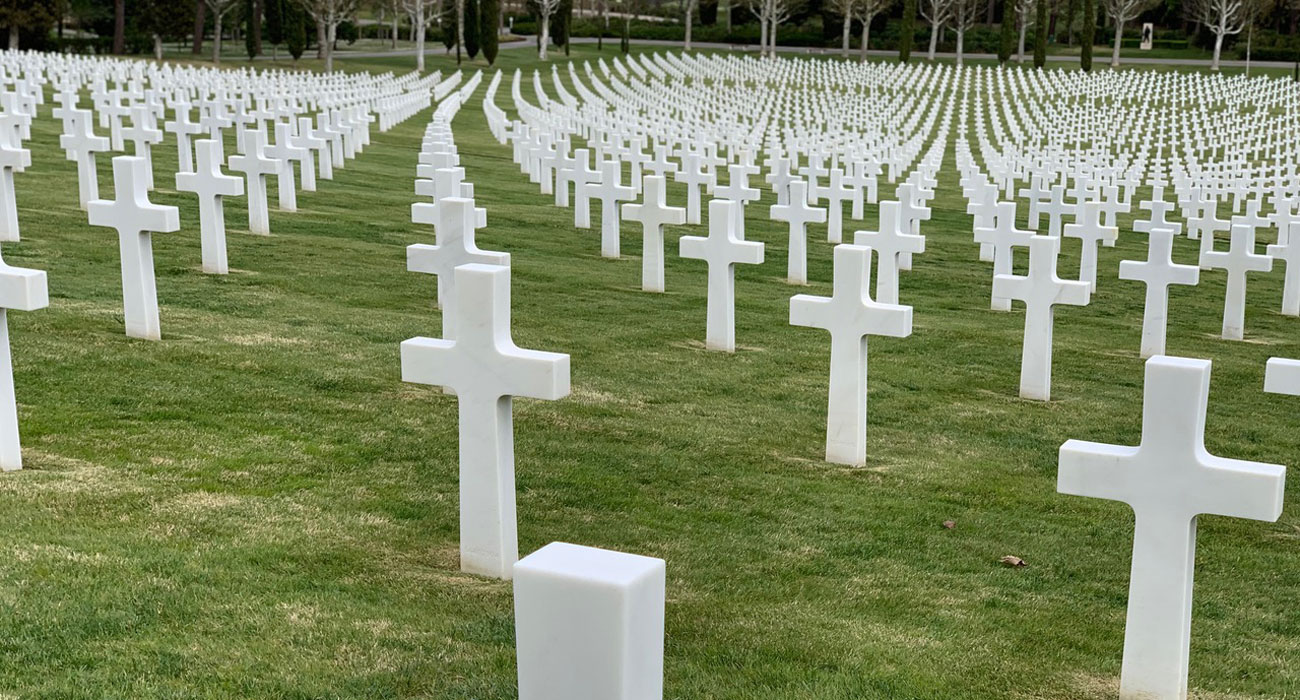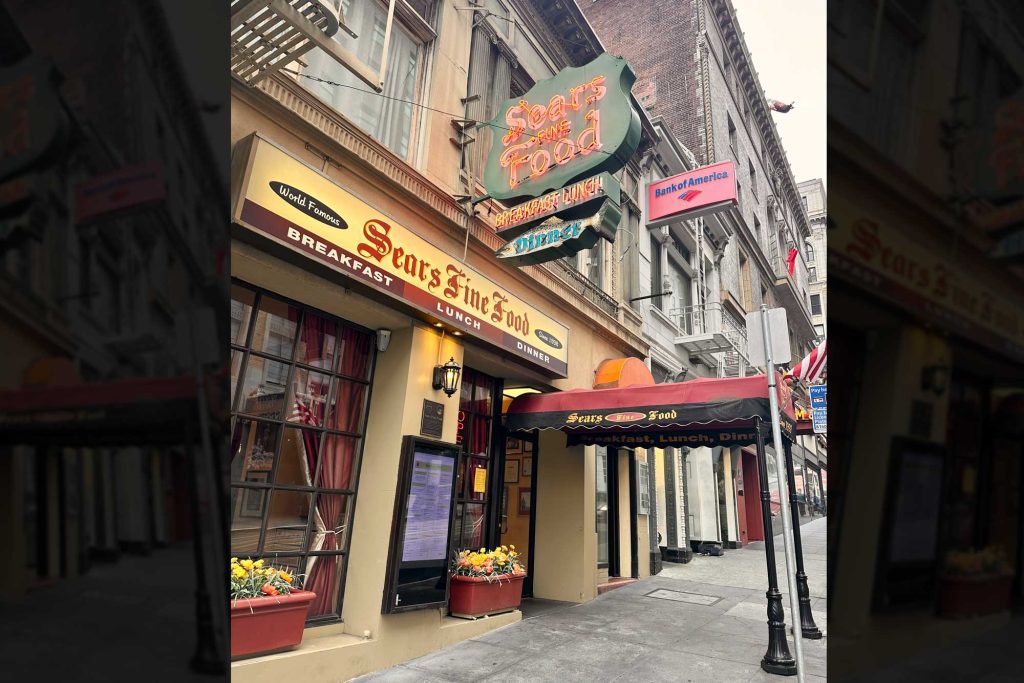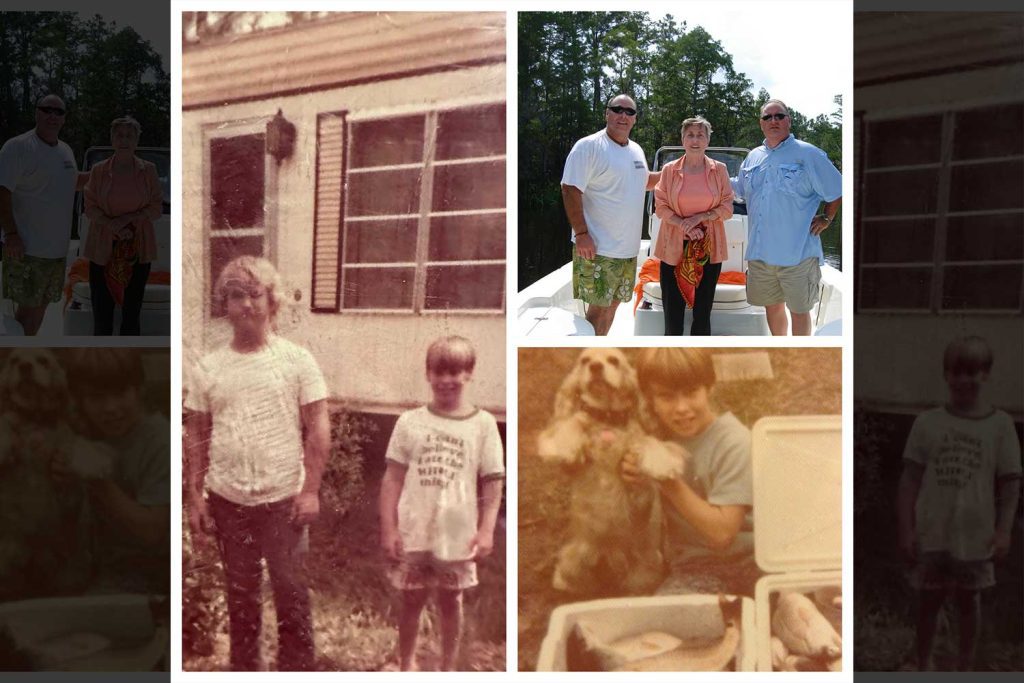Author’s Note: This column is being written on Memorial Day. Due to the publishing schedules of the various newspapers in which this column appears, it will be read anywhere from two days to one week after Memorial Day. An editor might say, “It’s not timely.” I would respond, “It’s always ‘timely.’ This subject is something that we should memorialize every day in America.”
In a typical year I spend two to three months in Europe. Most of that time is spent working in Italy, leading tours to all of the undiscovered places I have found over the years. My guests and I visit locals-only restaurants, wineries, butcher shops, facilities where they press olive oil, museums, and host private opera concerts. But one of the most meaningful visits we make when we are in the Tuscany Region, and it’s always on the last day, is the Florence-American World War II Cemetery.
The following is a column I wrote a couple of years ago. It seemed appropriate to bring it back out today:
When I began leading tours to Europe, I didn’t take guests to the Florence American Cemetery. Our time was more focused on the food, wine, and art of this region. Honestly, I spent almost 10 years passing the cemetery on the way to Florence from our home base in Barberino. I could see it through the trees while riding on the highway. I am ashamed to admit that— several times— I had the thought, “Well, I’ve been to Normandy, and have seen the cemetery there, I’ve already checked that box.”
I couldn’t have been more wrong— or more insensitive.
Two years ago, during our guest’s free day. My friend, collaborator, and television co-host, the watercolorist, Wyatt Waters and I were driving through the Tuscan countryside trying to find a place or setting he might want to paint. We were near the cemetery I had so uncaringly passed all of those years, and I finally said, “Let’s just pull in there and check it out.” It’s not an overstatement to say that pulling into the cemetery that day changed my on life on several levels.
If you have never visited to a cemetery operated by the American Battle Monuments Commission, you have truly missed out. If you have only been to Normandy, and none of the others, you have still missed out. The American Battle Monuments Commission is a governmental agency operated out of the Executive Branch and maintains all of our overseas cemeteries from World War I and World War II. Our country may get a few things wrong, but one of the things we truly get right is how we own and operate these sacred places where we bury and honor those who have sacrificed in defense of our freedoms.
The Florence American Cemetery is one of two WWII cemeteries in Italy. The Sicily-Rome Cemetery covers those who lost their lives in the southern part of the country— using Rome as the dividing line— and The Florence American Cemetery covers the northern half of Italy. Over 4,300 soldiers are buried there, and the wall of the missing lists another 1,409 soldiers. It is 70 acres of pristinely manicured American soil, just a few miles outside of Florence, and completely owned and maintained by the United States of America.
When Waters and I first visited we were greeted by the superintendent, Angel Matos, a retired naval officer from New York, whose first military assignment was in Gulfport, Mississippi. Matos lives on the grounds and is the ultimate ambassador for his country, his agency, and those buried in his cemetery. While Waters completed a watercolor of a statue on the grounds, Matos gave me a full tour of the cemetery. Only one-third of those who were killed in combat in the northern half of the Italian campaign are buried there. The other two thirds were sent home to be interred in Arlington or in their hometown. There are more than 1,400 names listed on the wall of the missing, most were Army air corps who were lost flying missions over the Adriatic. You will be proud to know that your country is still looking for, finding, and identifying those soldiers missing in action.
The Italian campaign was brutal and is overlooked by many as the liberation of Rome was on June 5th, 1944, the day before the Normandy beach landing. But there were three landings in Italy prior to that, and the Germans had built a defensive line of manpower and weaponry— The Gothic Line— that was five miles deep and stretched the entire width of Italy through the Apennine Mountains.
At the end of the day of that first cemetery visit, Waters and I met at the base of the flag after he finished his painting. As it does every day, “Taps” began playing in the distance. As the flag was being lowered, Matos asked if we would like to fold the flag. It was one of the most meaningful moments in my life. As we tucked the final corner of the flag into the tight triangular pocket we had created, I vowed to do two things: Take my groups— and every other group thereafter— to this sacred place, and to never, ever, pass another American war cemetery without stopping and paying my respects.
These days when I visit, I often encounter Italian citizens who are also there to pay their respects for the sacrifices made by young American men and women— some as young as 17, with an average age of 22— who volunteered to travel to a country halfway across the globe to liberate people they had never— and would never— meet from an evil and tyrannical madman.
There are 64 Mississippians buried in the Florence American Cemetery. One of them is U.S. Army Captain Bernard Yolles from Winona. A Purple Heart recipient who left his family’s department store business, a wife, and baby daughter behind to volunteer for service when he was 24-years old. Yolles, a member of the only Jewish family in Winona at the time led an all African-American division of Buffalo Soldiers into battle.
A Jewish Captain from Mississippi, leading an all-black division in an army that was segregated at the time— his is an amazing story, and just one of over 4,000 stories that need to be told at the Florence American Cemetery.
I always tell our guests the story of Captain Bernard Yolles and give them some backstory on his life in Winona before the war. I also tell ask guests to stop by another cross or Star of David on the grounds for a minute and say a short prayer of gratitude to that soldier. It might be the only time anyone ever visits that particular grave.
Today I am feeling grateful that I know the meaning of sacrifice and am in awe and humbled by those Americans who paid the ultimate sacrifice in World War II.
Onward.




